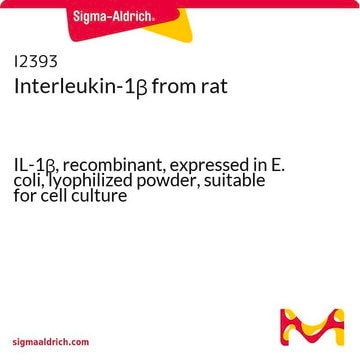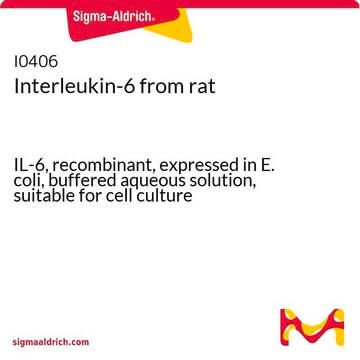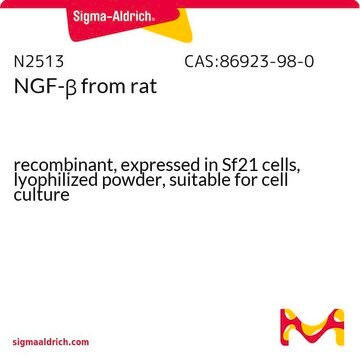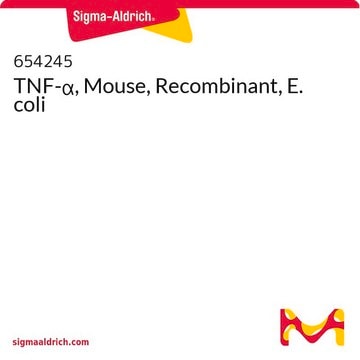T5944
Tumor Necrosis Factor-α from rat
TNF-α, recombinant, expressed in E. coli, powder, suitable for cell culture
Synonym(e):
Cachectin, TNF-α
About This Item
Empfohlene Produkte
Biologische Quelle
rat
Qualitätsniveau
Rekombinant
expressed in E. coli
Assay
≥98% (SDS-PAGE and HPLC)
Form
powder
Qualität
endotoxin tested
Mol-Gew.
predicted mol wt ~17 kDa
Verpackung
pkg of 10 μg
pkg of 50 μg
Lagerbedingungen
avoid repeated freeze/thaw cycles
Methode(n)
cell culture | mammalian: suitable
Verunreinigungen
<1 EU/μgtested (LAL test)
Farbe
white
Löslichkeit
water: soluble
UniProt-Hinterlegungsnummer
Lagertemp.
−20°C
Angaben zum Gen
rat ... Tnf(24835)
Allgemeine Beschreibung
Anwendung
- To stimulate inducible nitric oxide synthase (iNOS) expression in the macrophages as an indication of M1 macrophage activation
- To study its effect on pancreatic β cell apoptosis
- To evaluate the effect of progesterone on the expression of tumor necrosis factor (TNF)-α in synovial membrane
- As a blocking antigen in the control, for immunohistochemical analysis
Biochem./physiol. Wirkung
Physikalische Form
Hinweis zur Analyse
Lagerklassenschlüssel
11 - Combustible Solids
WGK
WGK 3
Flammpunkt (°F)
Not applicable
Flammpunkt (°C)
Not applicable
Analysenzertifikate (COA)
Suchen Sie nach Analysenzertifikate (COA), indem Sie die Lot-/Chargennummer des Produkts eingeben. Lot- und Chargennummern sind auf dem Produktetikett hinter den Wörtern ‘Lot’ oder ‘Batch’ (Lot oder Charge) zu finden.
Besitzen Sie dieses Produkt bereits?
In der Dokumentenbibliothek finden Sie die Dokumentation zu den Produkten, die Sie kürzlich erworben haben.
Kunden haben sich ebenfalls angesehen
Unser Team von Wissenschaftlern verfügt über Erfahrung in allen Forschungsbereichen einschließlich Life Science, Materialwissenschaften, chemischer Synthese, Chromatographie, Analytik und vielen mehr..
Setzen Sie sich mit dem technischen Dienst in Verbindung.











